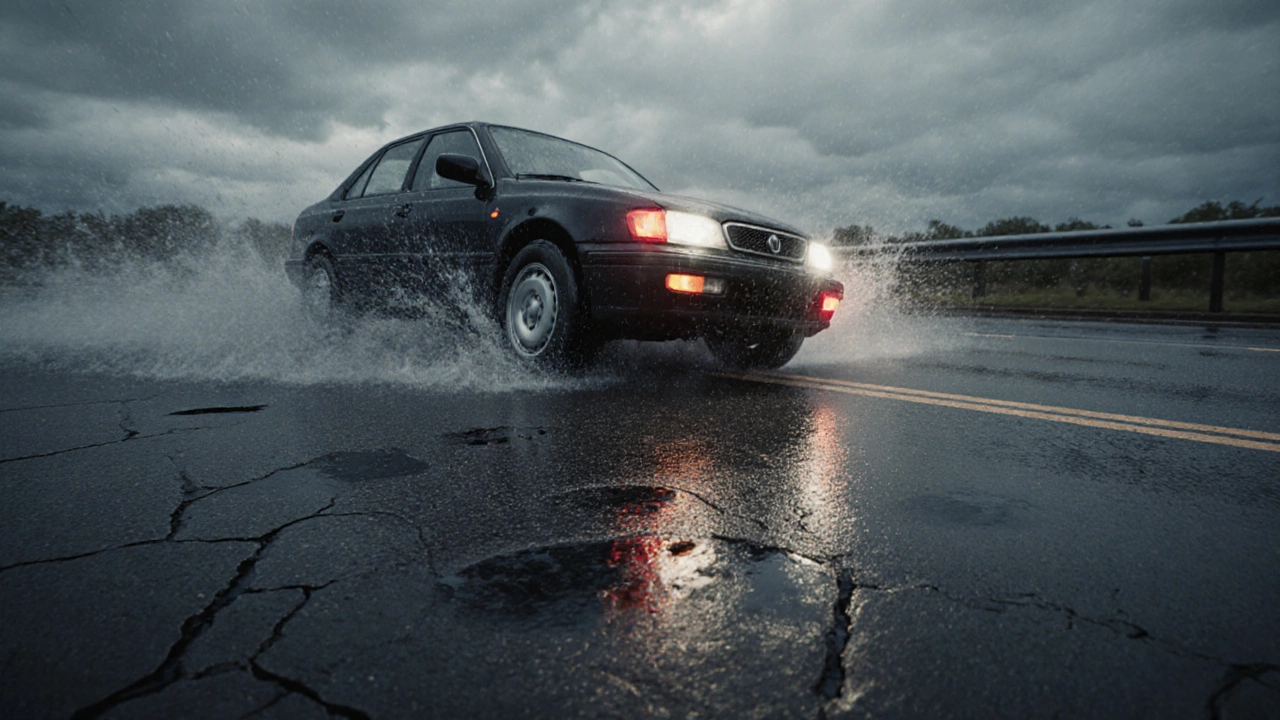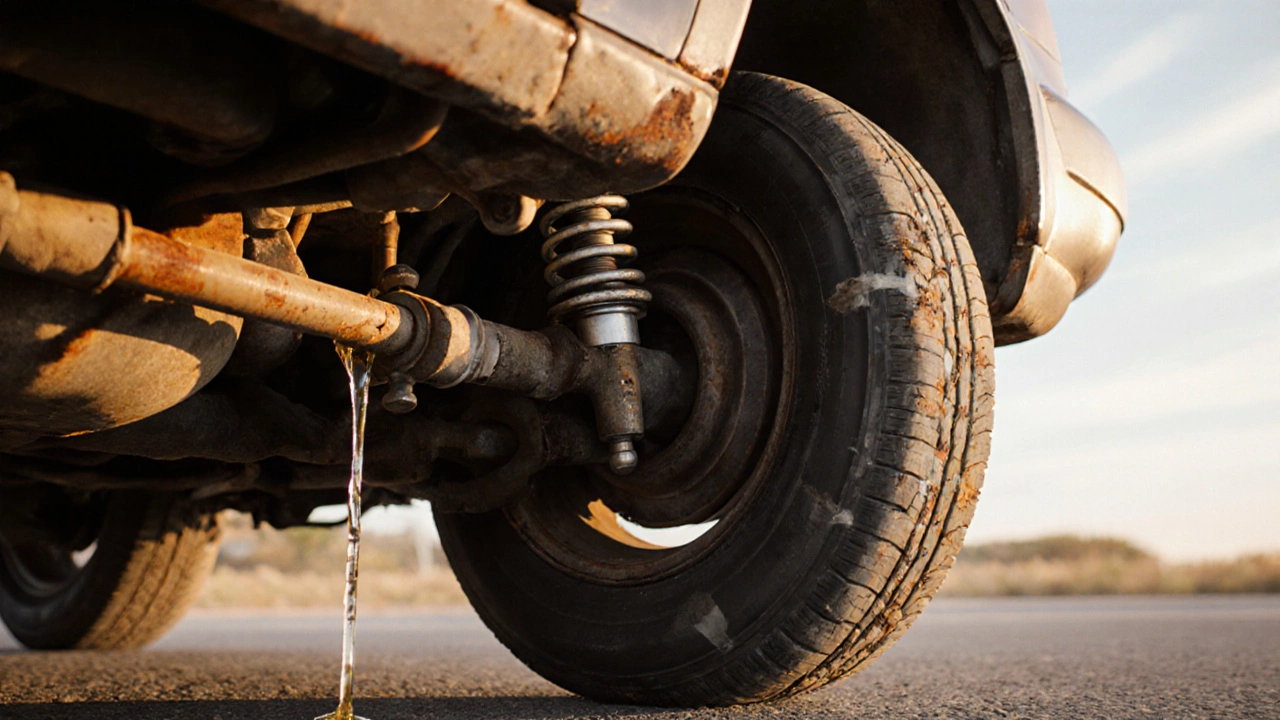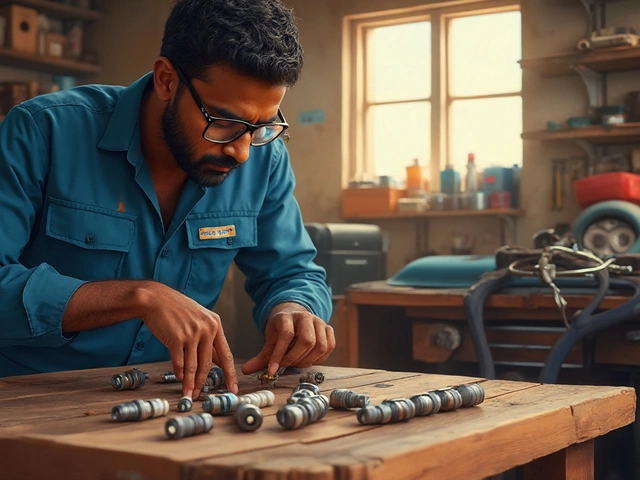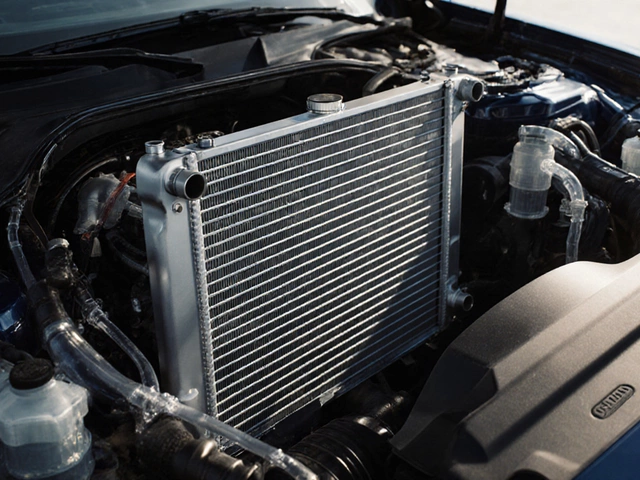
Braking Distance Calculator
The National Highway Traffic Safety Administration found vehicles with failed suspension components took up to 18% longer to stop in emergency braking tests. This means missing a stop sign by a full car length at higher speeds.
Driving with a bad suspension isn’t just uncomfortable-it’s dangerous. You might not notice right away, but worn shocks, broken struts, or sagging springs change how your car behaves on the road. And by the time you feel it, the damage is already spreading to other parts of your vehicle.
Your car doesn’t stop when you expect it to
Bad suspension means your tires don’t stay planted on the road. When you hit a bump or brake hard, the front end dives, the rear lifts, and your tires lose grip. That’s not just a feeling-it’s physics. A study by the National Highway Traffic Safety Administration found that vehicles with failed suspension components took up to 18% longer to stop in emergency braking tests. That’s like missing a stop sign by a full car length.
Think about it: if your tires aren’t touching the road evenly, your brakes are working harder just to slow you down. Brake pads wear out faster. Rotors warp. And in wet or icy conditions, you’re one bad bump away from hydroplaning or skidding out of control.
Steering becomes unpredictable
Ever felt your car drift sideways when you hit a pothole? Or noticed the steering wheel pulling to one side without you touching it? That’s your suspension failing to hold the wheels in alignment.
Worn control arms, ball joints, or bushings let the wheels move where they shouldn’t. You’re not just fighting the road-you’re fighting your own car. Steering response gets sluggish. Cornering feels floaty. And at highway speeds, even a light crosswind can make your vehicle feel like it’s drifting off course.
Drivers who ignore this often end up with uneven tire wear, which costs hundreds in replacements. But worse, they lose the ability to make quick, precise steering corrections-exactly what you need when a kid runs into the street or a truck swerves in front of you.
The ride gets rougher, but not because the road’s worse
You might think your car just got noisier because it’s old. But if every bump feels like a jolt, every crack in the pavement sends a shudder through the seat, and your coffee spills every time you hit a speed bump-it’s not the road. It’s your shocks and struts.
Shocks and struts don’t just make the ride smoother. They control the up-and-down motion of your wheels. When they’re worn out, your tires bounce instead of gripping. That constant motion stresses every part of the chassis: the mounts, the frame, even the engine mounts. Over time, that leads to cracks, broken welds, and expensive repairs you didn’t sign up for.
And if you carry cargo or tow trailers, a bad suspension makes it worse. The rear sags, the weight shifts unpredictably, and your vehicle becomes harder to control. A 2023 study by the Auto Care Association showed that 42% of trailer-related accidents involved vehicles with known suspension issues.

It wears out your tires faster
Bad suspension doesn’t just make your car handle poorly-it kills your tires. If your wheels are tilted inward or outward because of worn control arms, the inside or outside edges of your tires wear down in months instead of years. You might see bald patches on one side and think it’s a wheel alignment issue. It is-but the alignment is failing because the suspension parts holding the wheels in place are broken.
Replacing tires every 20,000 miles instead of 50,000 adds up fast. A set of four mid-range tires costs $600-$800. Fixing the suspension? Around $400-$700 depending on your car. You’re paying more to replace tires than to fix the root problem.
Your car’s other systems start failing
It’s not just the tires and brakes. A failing suspension puts stress on the entire vehicle. Steering components wear out faster. Exhaust pipes rattle loose because the engine and transmission aren’t held steady. Even your wheel bearings can fail early from constant vibration.
One mechanic in Ohio told me about a customer who came in complaining of a loud clunking noise. He thought it was the exhaust. Turns out, his rear struts had completely collapsed. The spare tire mount had been banging against the frame for months. By the time he brought it in, the frame had a hairline crack. Repair cost: $2,800. The struts? $320.
Bad suspension doesn’t stay isolated. It becomes a domino effect. One broken part drags down everything else.
What does a bad suspension actually look like?
You don’t need a diagnostic tool to spot it. Here’s what to check yourself:
- Press down on each corner of your car. If it bounces more than once or twice, your shocks are worn.
- Look at your tires. Uneven wear-especially on one edge-is a red flag.
- Check for oil leaks on the shocks. If they’re wet or oily, they’re leaking fluid and losing pressure.
- Listen for clunking or rattling over bumps. That’s metal hitting metal because bushings are gone.
- Drive on a straight road. Does your car pull to one side without steering input? Suspension misalignment is likely.
These aren’t guesses. These are real signs mechanics see every day. And they’re easy to spot if you know what to look for.

How long can you really drive with bad suspension?
Some people say, “I’ve driven like this for years.” But that’s not a strategy-it’s a gamble. Suspension parts don’t fail all at once. They degrade slowly. You adapt. You slow down. You avoid bumps. But one day, you hit a patch of gravel or a sudden stop, and the part you’ve been ignoring gives out.
Most struts and shocks last 50,000 to 100,000 miles. If you’re past 75,000 and haven’t checked them, you’re overdue. If you drive on rough roads, salted winter streets, or carry heavy loads, that number drops to 40,000-60,000 miles.
Waiting until it’s “really bad” is like waiting until your brakes squeal before replacing them. By then, you’ve already damaged more expensive parts.
What’s the fix?
Replace the worn parts. Not just one strut. Not just the front. If one shock is bad, the others are close behind. Replacing them in pairs or sets ensures even handling and predictable performance.
For most cars, a full front and rear suspension overhaul-including shocks, struts, bushings, and alignment-costs between $800 and $1,500. That’s less than two new tires, and it restores safety, control, and comfort.
And if you’re thinking about skipping it to save money? Think again. Insurance companies don’t cover accidents caused by neglected maintenance. If you crash because your suspension failed, you’re paying out of pocket. Always.
Bottom line
Driving with a bad suspension isn’t a minor inconvenience. It’s a safety risk that grows worse every mile. Your car doesn’t just ride poorly-it stops poorly, turns poorly, and can fail when you need it most. You don’t need to be a mechanic to spot the signs. And you don’t need to wait for a breakdown to act.
Check your suspension. If it’s worn, fix it. Your tires, your brakes, your wallet, and most importantly-your life-will thank you.





